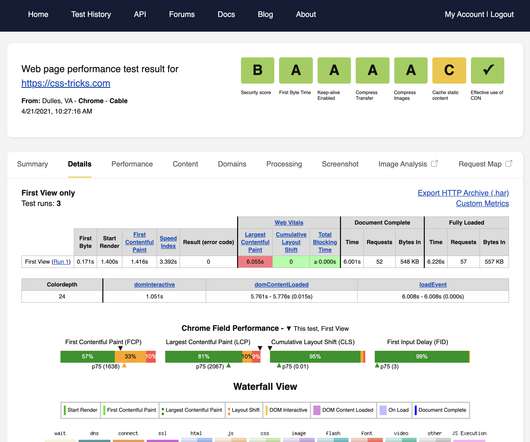Site reliability engineering: 5 things you need to know
Dynatrace
FEBRUARY 4, 2021
As a discipline, SRE focuses on improving software system reliability across key categories including availability, performance, latency, efficiency, capacity, and incident response. SRE applies DevOps principles to developing systems and software that help increase site reliability and performance.



















Let's personalize your content